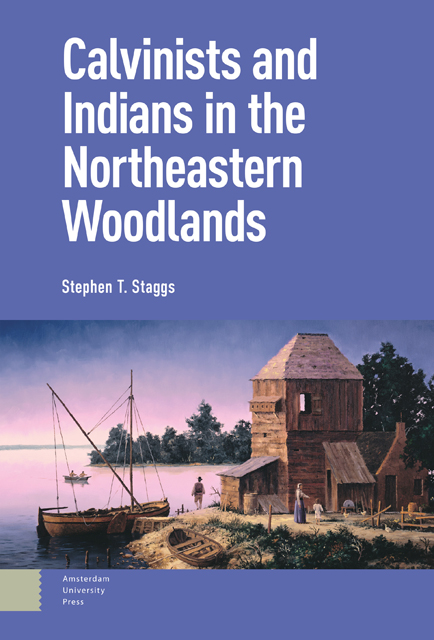Book contents
- Frontmatter
- Contents
- Acknowledgements
- Abbreviations
- List of Figures
- Notes on Usage
- Introduction
- 1 “Gentiles by Nature,” 1566–1626
- 2 “So That the Fullness of the Gentiles Might Gradually Come In,” 1627–1642
- 3 “A Church and Community among the Christians and the Blind Gentiles,” 1642–1652
- 4 “We, with God’s Help, Hope to Bring the Barbarous Tribes to Devotion,” 1652–1660
- 5 “Who Gave Jacob for a Spoil and Israel to the Robbers?” 1660–1664
- 6 “A Gentile Woman, Karanondo, … Now Called Lidia,” 1664–1750
- Conclusion
- Appendix A Dutch References to Indians: 1609–1664
- Appendix B Indian Baptisms, Professions of Faith, and Marriages in the Dutch Reformed Churches of New York: 1690–1750
- List of Archival Sources
- Bibliography
- Index
- Frontmatter
- Contents
- Acknowledgements
- Abbreviations
- List of Figures
- Notes on Usage
- Introduction
- 1 “Gentiles by Nature,” 1566–1626
- 2 “So That the Fullness of the Gentiles Might Gradually Come In,” 1627–1642
- 3 “A Church and Community among the Christians and the Blind Gentiles,” 1642–1652
- 4 “We, with God’s Help, Hope to Bring the Barbarous Tribes to Devotion,” 1652–1660
- 5 “Who Gave Jacob for a Spoil and Israel to the Robbers?” 1660–1664
- 6 “A Gentile Woman, Karanondo, … Now Called Lidia,” 1664–1750
- Conclusion
- Appendix A Dutch References to Indians: 1609–1664
- Appendix B Indian Baptisms, Professions of Faith, and Marriages in the Dutch Reformed Churches of New York: 1690–1750
- List of Archival Sources
- Bibliography
- Index
Summary
In the late sixteenth century the Dutch Republic was inundated with Indian images. Bartolomé de las Casas's account of Spanish atrocities against American Indians, first published in Antwerp in 1578 as Seer cort verhael vande destructie van d’Indies, was subsequently published in Amsterdam in 1607, 1609, 1620, and 1640. In 1588 Hans Staden's account of his captivity among the Tupi Indians of Brazil came off a press in Antwerp as Warachtige historie ende beschrijvinge eens lants in America ghelegen. Ten years later, José de Acosta's account of the natural history of the West Indies was published in Haarlem. Given the popularity of these works among the literati in the Dutch Republic, it is quite clear that there were many people in the Nederlanden (Low Countries) who were just as curious about Indians as their European neighbors.
Dutch Reformed theologians were also curious and looked to the Bible to incorporate Indians into a Reformed worldview. The biblical “Other” were the Gentiles, or non-Jews, to whom Christ had called his followers to bring the good news of salvation. When Johannes Dyrkinus translated the Bible into the Dutch vernacular in 1562, he chose the term heydenen to describe the biblical “Other.” Subsequent translators did the same. Thus, when predikanten (preachers) conceptualized Indians in their sermons and pamphlets they presented Indians as blinde heydenen (blind Gentiles) to whom the Dutch were being called, by God, to present the gospel through the preaching of the Bible and the Christian conduct of colonists, which of course necessitated social interaction. These sermons and pamphlets were intended to convince the hearers and readers—including members of the Staten-Generaal (States General), the Vereenigde Oostindische Compagnie (United East India Company or VOC), the Geoctroyeerde West-Indische Compagnie (Chartered West India Company or WIC)—that spreading the gospel among American Indians ought to be a priority.
Since many of the founders and leaders of the WIC and the colony of Rensselaerswijck were ardent Calvinists themselves, their sermons did not fall on deaf ears. In fact, Dutch ziekentroosters (comforters of the sick) and predikanten were consistently given instructions to proselytize among the Indians over the course of the seventeenth and eighteenth centuries. These instructions were followed, to various degrees, by the ziekentroosters and predikanten who served in Nieuw Nederland (New Netherland).
- Type
- Chapter
- Information
- Calvinists and Indians in the Northeastern Woodlands , pp. 231 - 234Publisher: Amsterdam University PressPrint publication year: 2023

